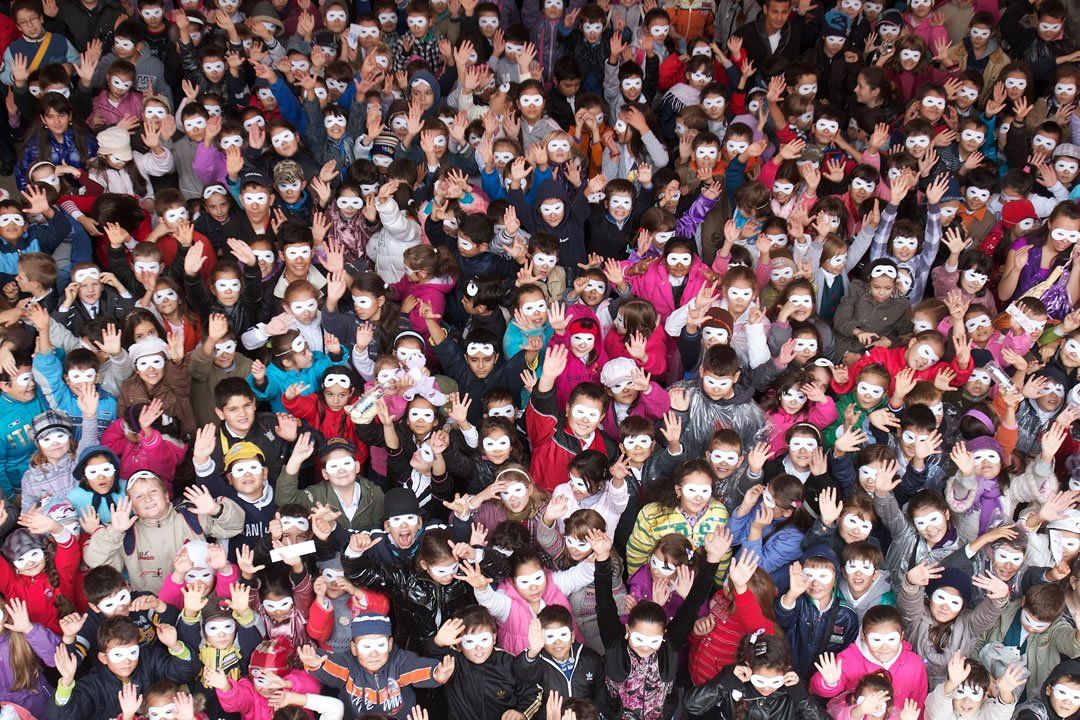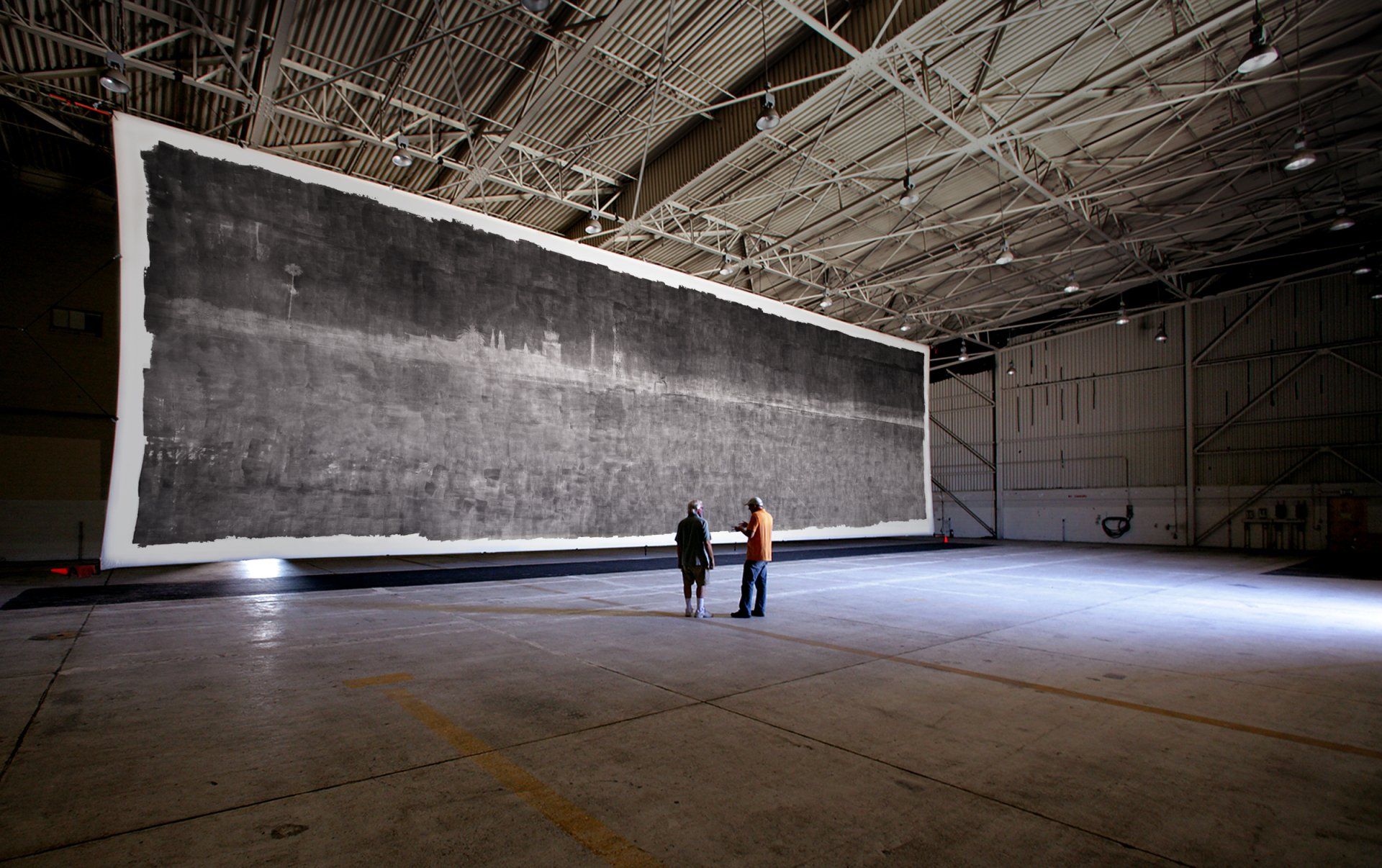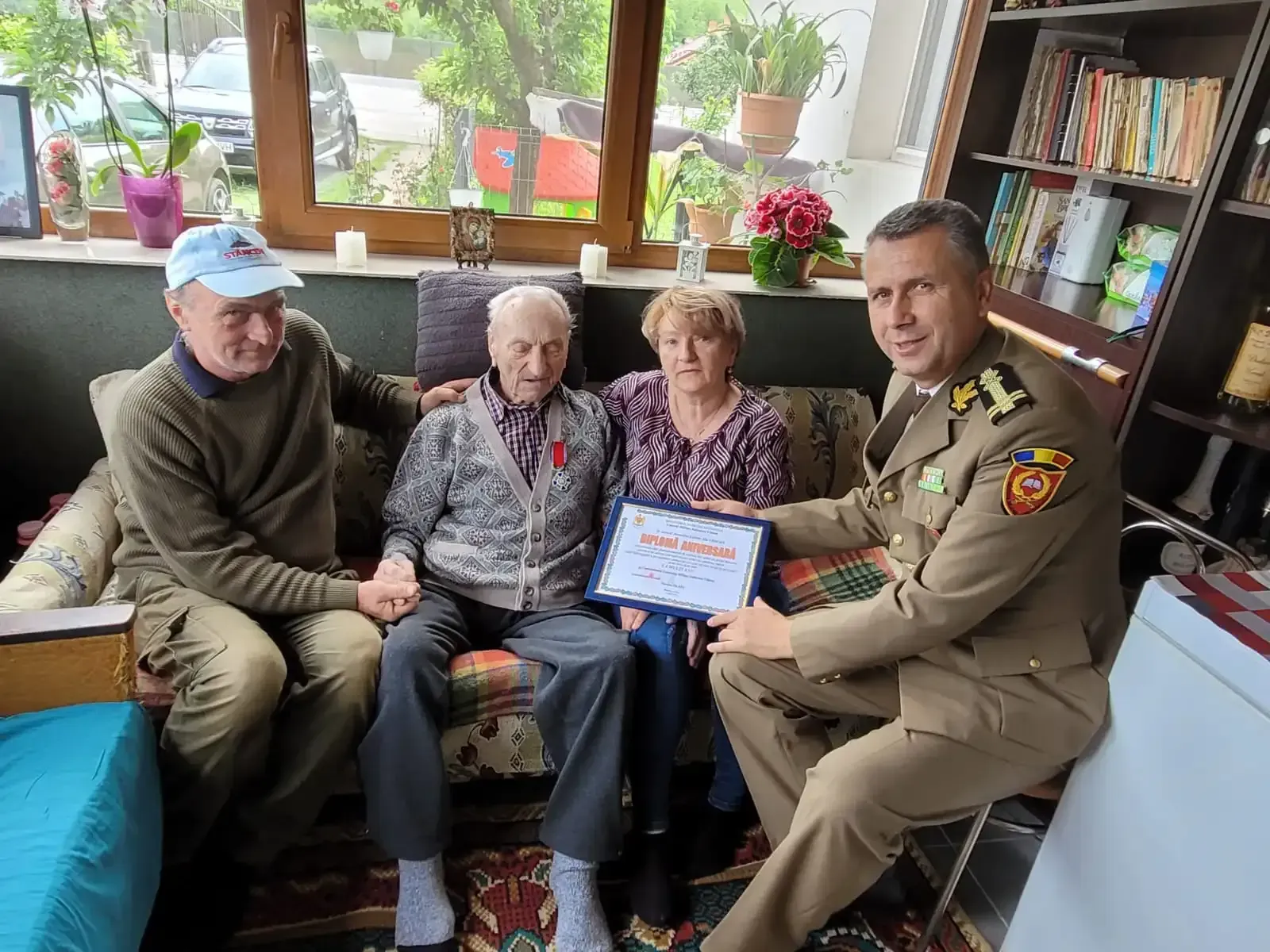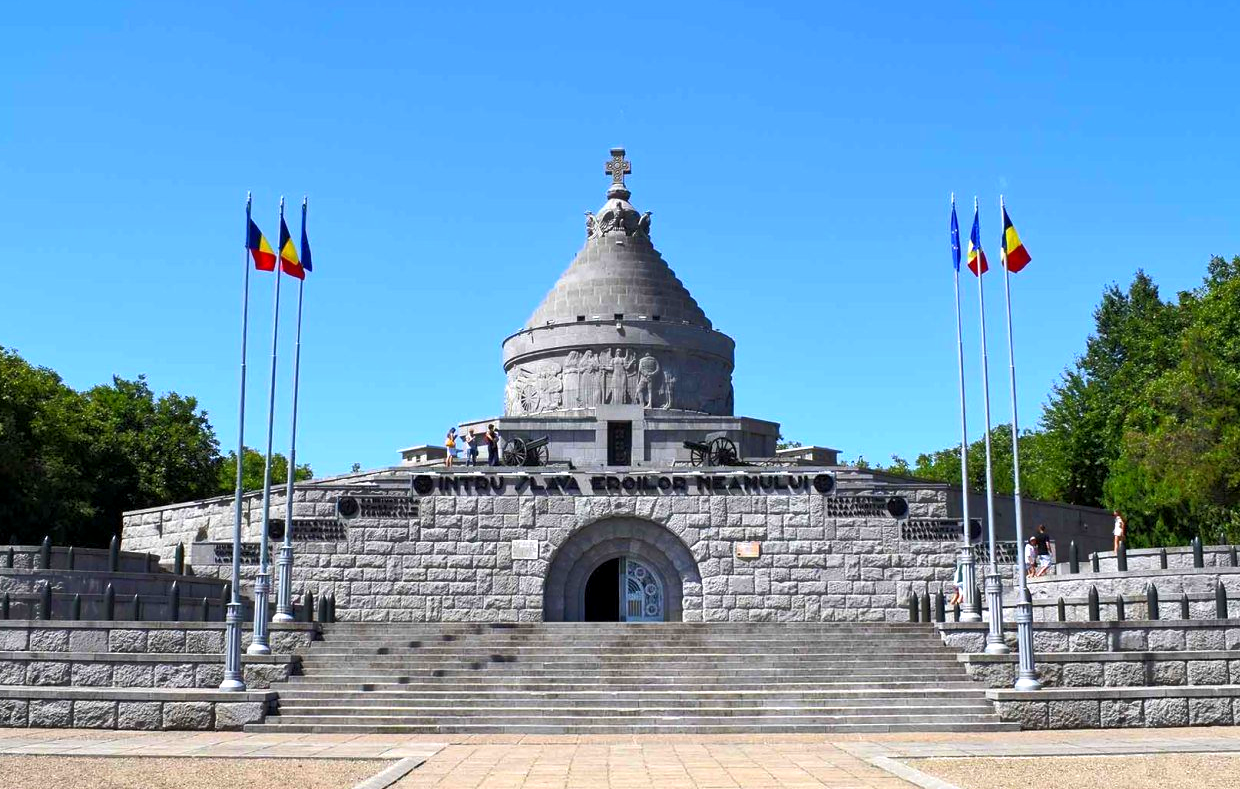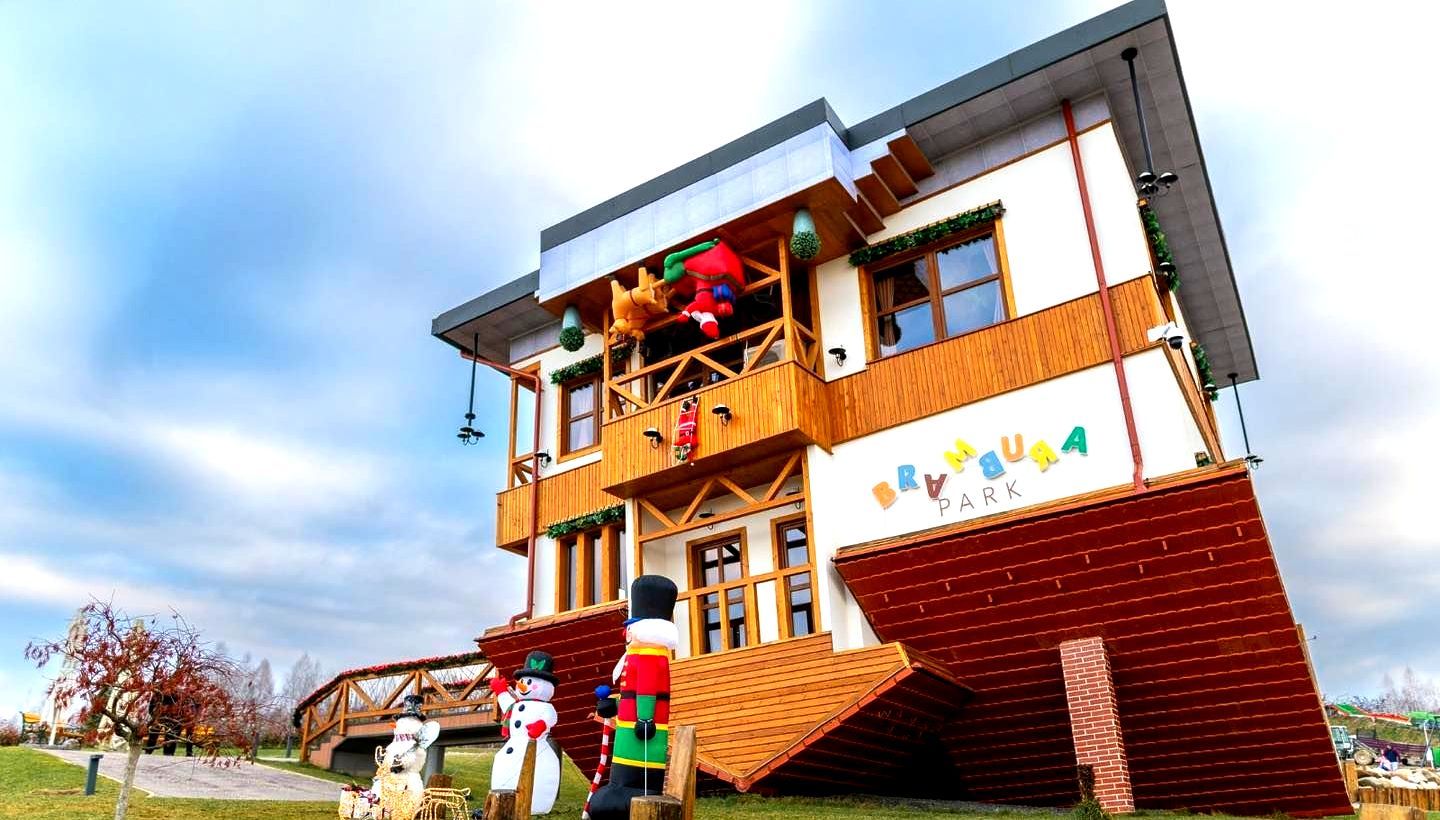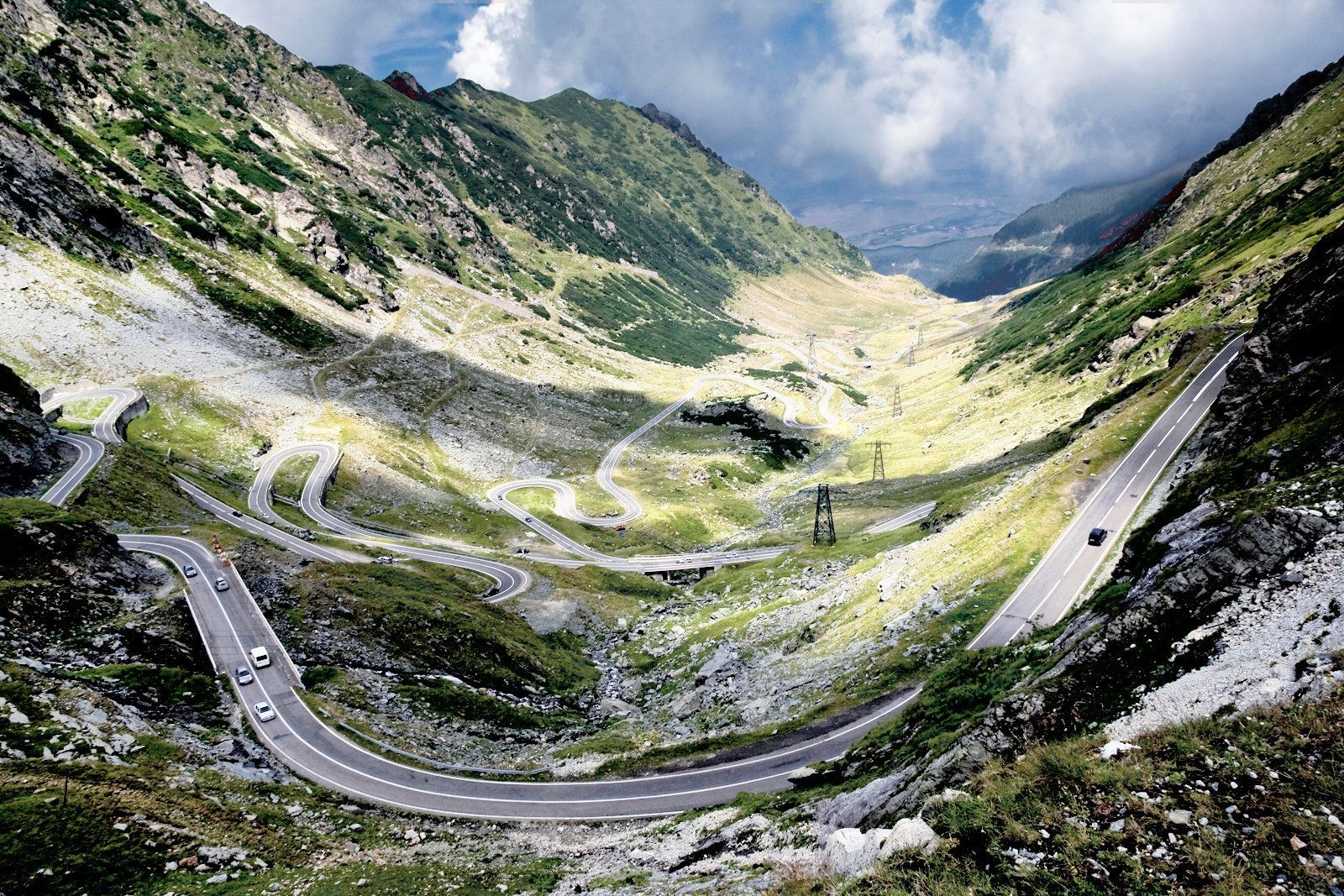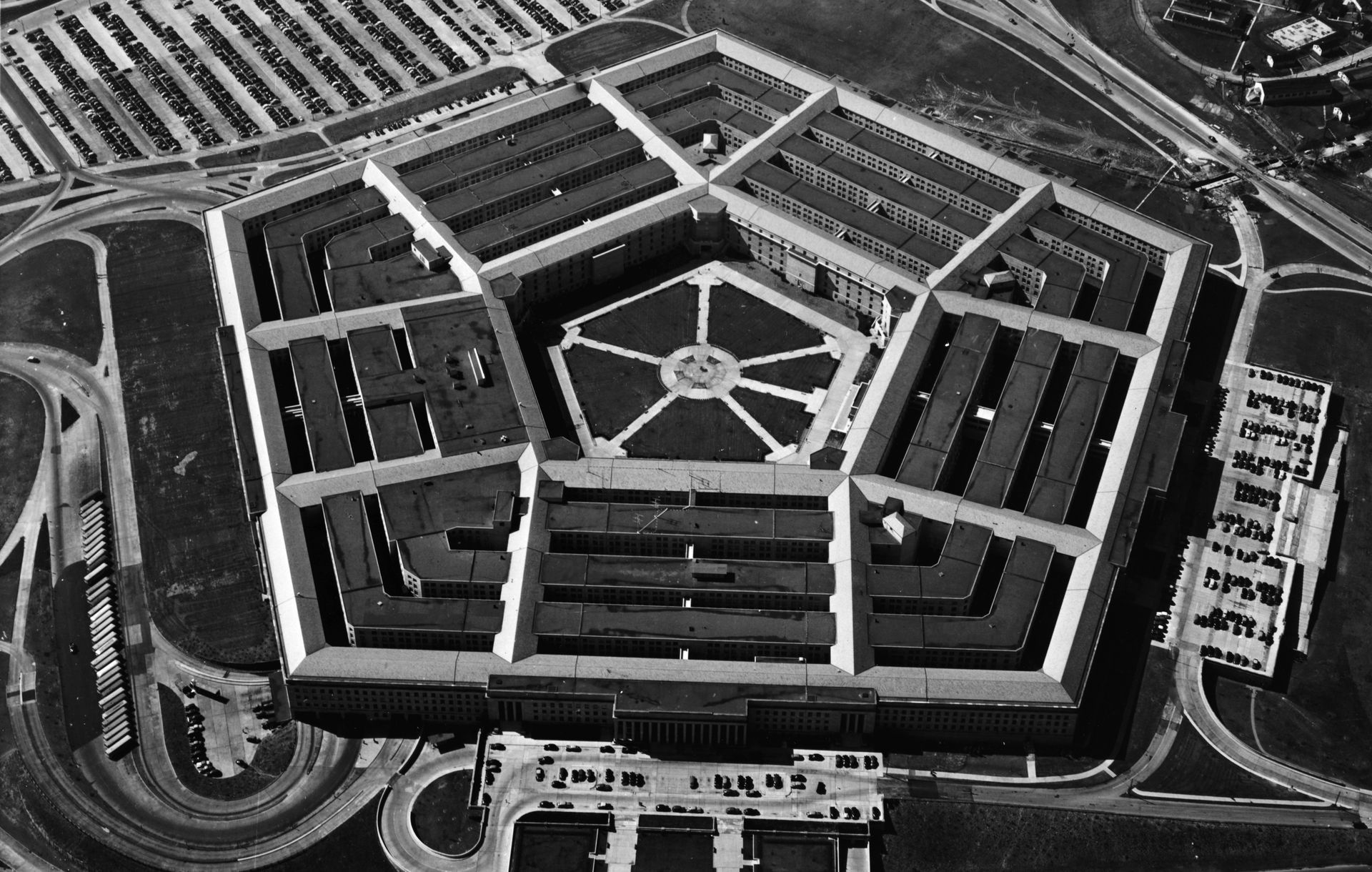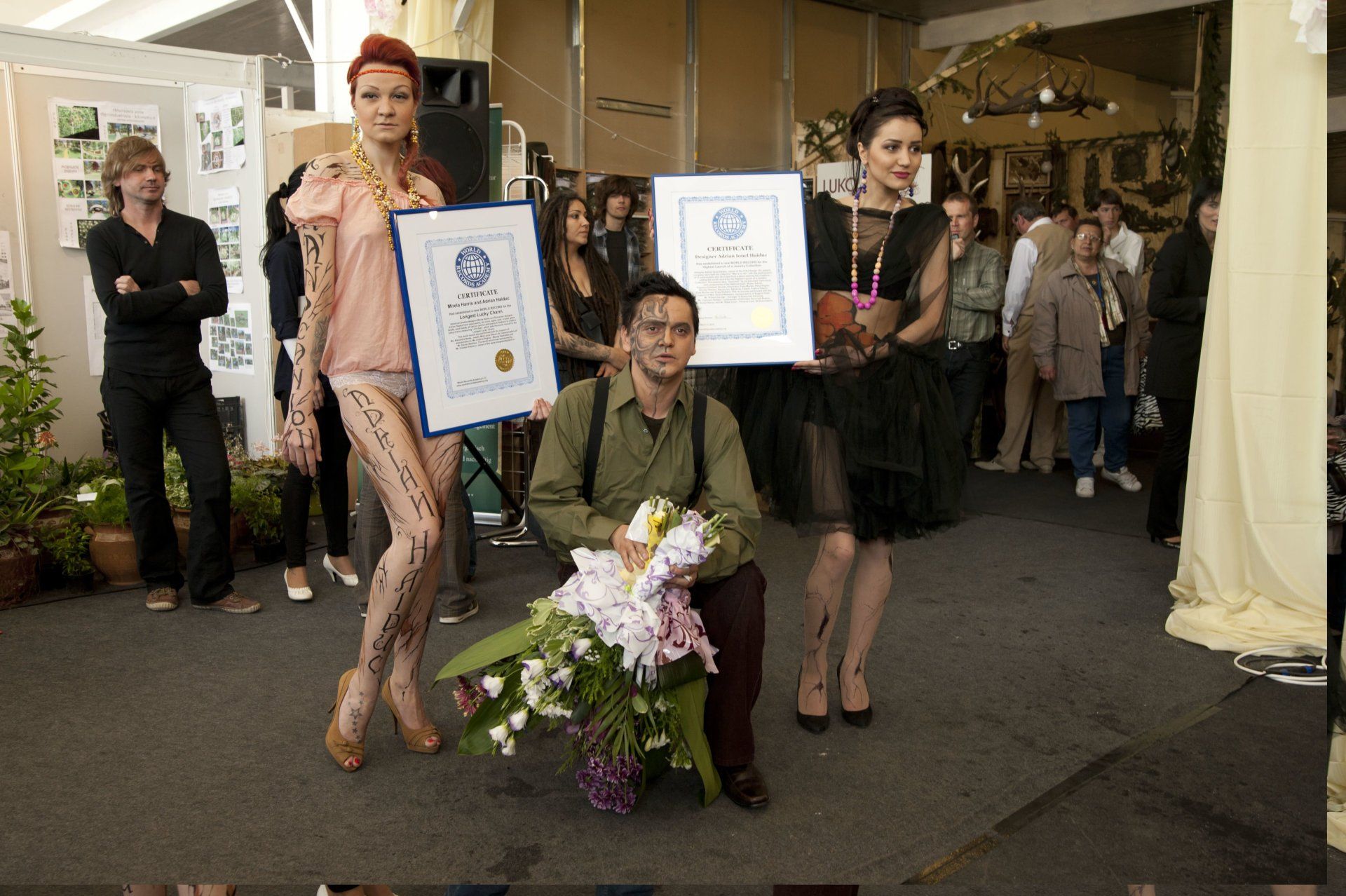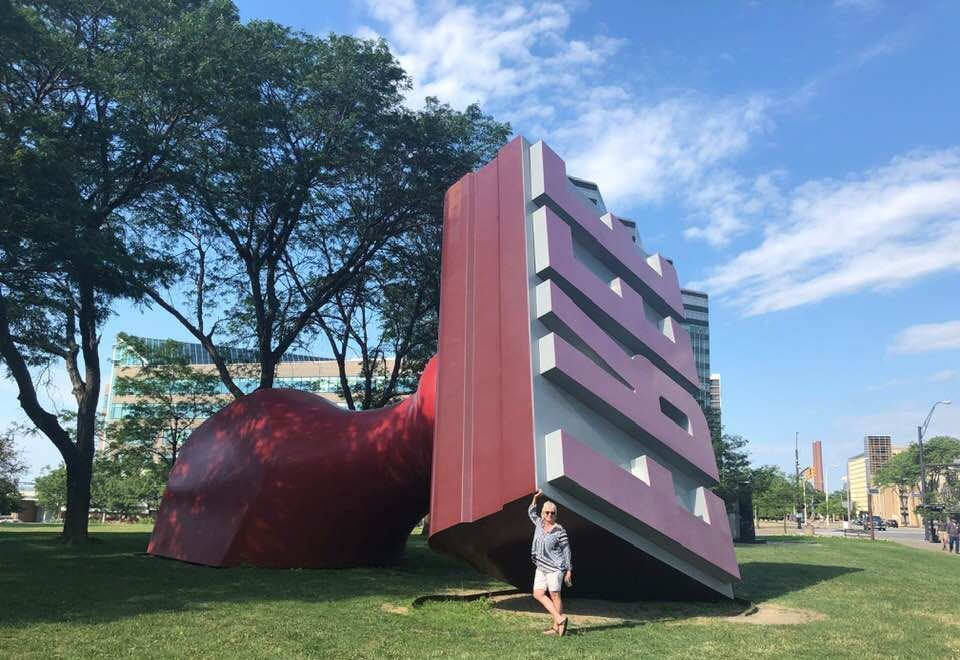World's First Combat Photographer, world record set by Carol Popp de Szathmári
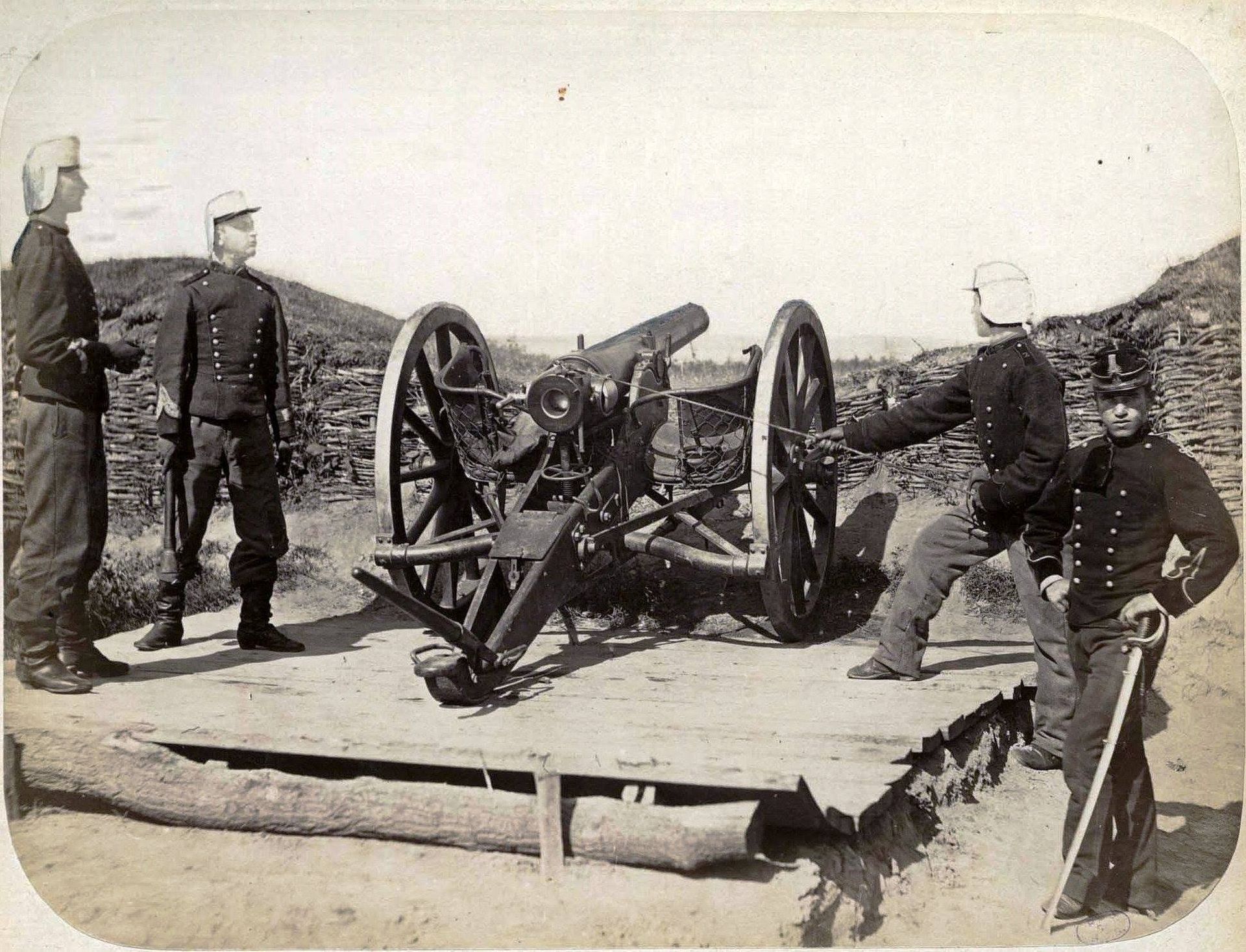
Bucharest, Romania--Carol Popp de Szathmari was a Romanian painter, lithographer, and photographer, who was based in Bucharest from the age of 18 until his death; for his pictures of the battlefield taken during the first year of the Russo-Turkish war, later known as the Crimean War, he sets the world record for being the World's First Combat Photographer, according to the WORLD RECORD ACADEMY.
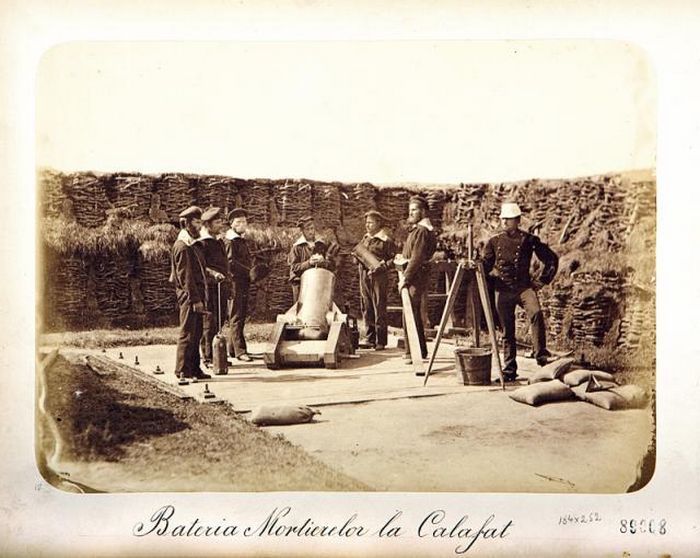
"Carol Szathmari (Romanian: Carol Popp de Szathmari was a Romanian painter, lithographer, and photographer, who was based in Bucharest from the age of 18 until his death. (Wikipedia)
"He is seen as the founder of the Romanian photography. He is also considered the world's first combat photographer for his pictures of the battlefield taken during the first year of the Russo-Turkish war, later known as the Crimean War.
"Szathmari was born in the city of Cluj-Napoca, Romania, in 1812. Initially, he studied law at the Reformed College in Cluj. By the age of eighteen he had moved to Bucharest. He studied painting from 1832 to 1834 in Rome, and on returning to Bucharest he was frequently commissioned to create paintings for the Wallachian boyars. He would later go on to achieve notoriety as the official artist of the Romanian royal court.[8] He spent most of his life in Bucharest, where he died in 1887."
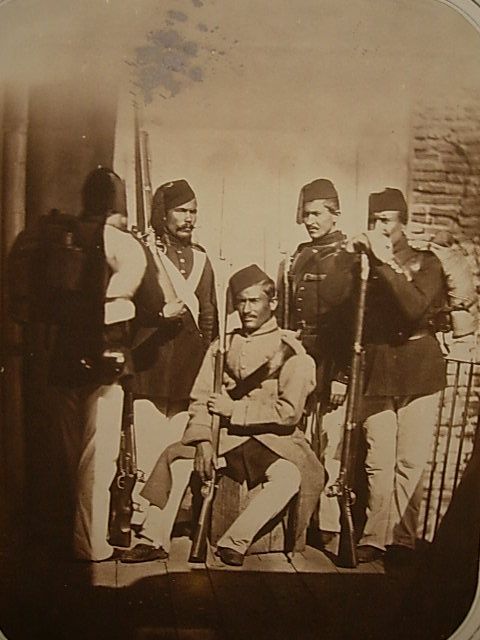
"In 1848 Szathmari took his first photograph, using the talbotype process, of a cupid statue that had two broken arms. By 1850 he had mastered enough of the photographic process to open a commercial photographic studio in Bucharest.
"Among his clients for portraits at his Bucharest studio were high-level Russian and Turkish military officers.[6][9] These connections allowed him access to the military camps of both sides at Wallachia, of the battle that would become known as the Crimean War.
"In 1853, using a wagon specially equipped with a dark room for processing glass plates with wet collodion, he went to the Danube river's banks and various other places, landscapes, fortifications and battlefields, where he photographed various troops, both Turkish and Russian, their equipment and their commanding officers. (Wikipedia)
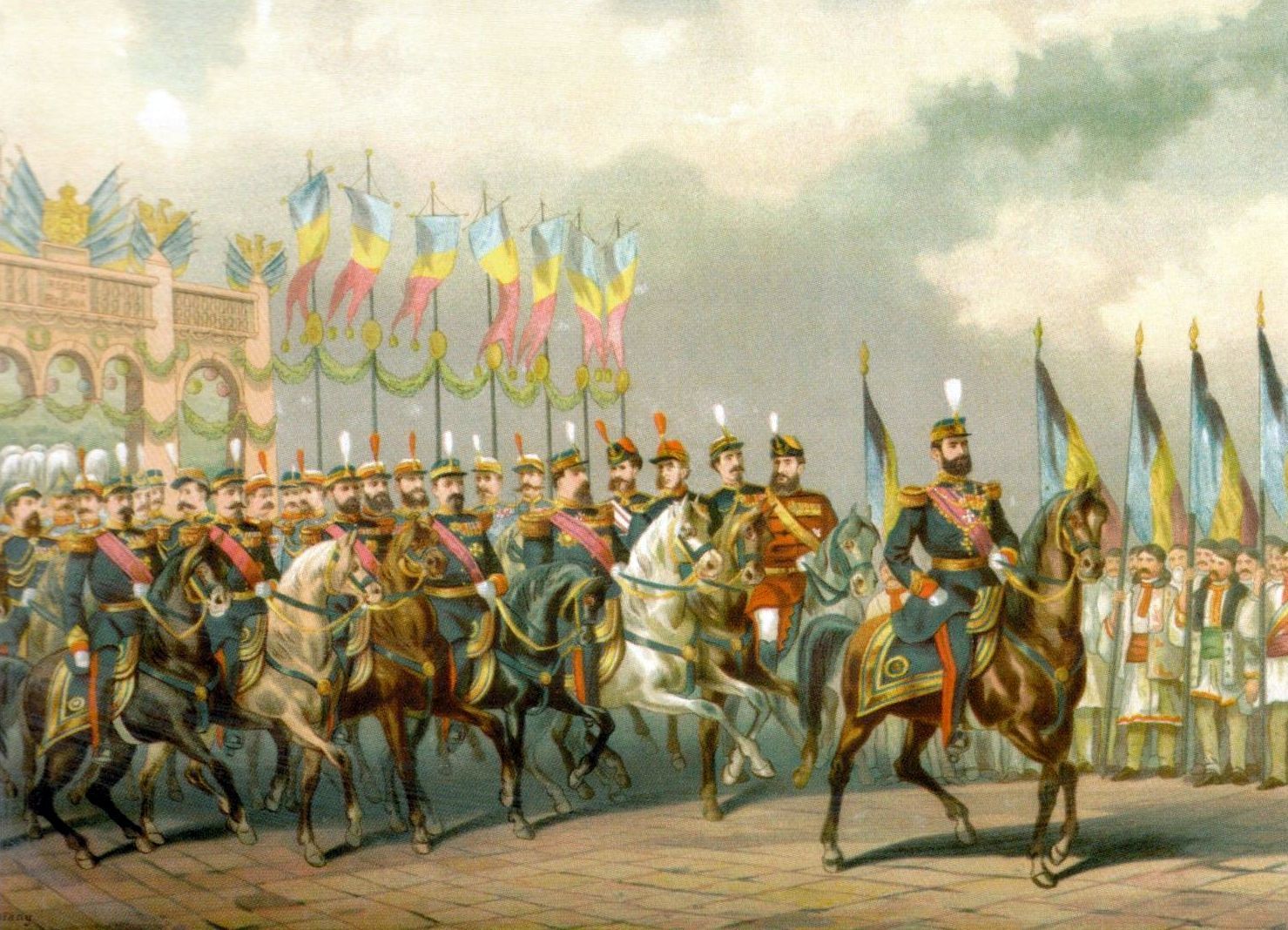
"Szathmari exhibited his photos, bound in an album, at the Exposition Universelle of 1855. For his work presented at the exhibition, he received the second class medal.
"In July of the same year, he presented copies of his work to Queen Victoria during a private meeting at Osborne Castle, Isle of Wight, and she awarded him a gold medal in recognition of his work. The same year, he presented two 95 page albums of his photographs to Franz Josef I." (Wikipedia)
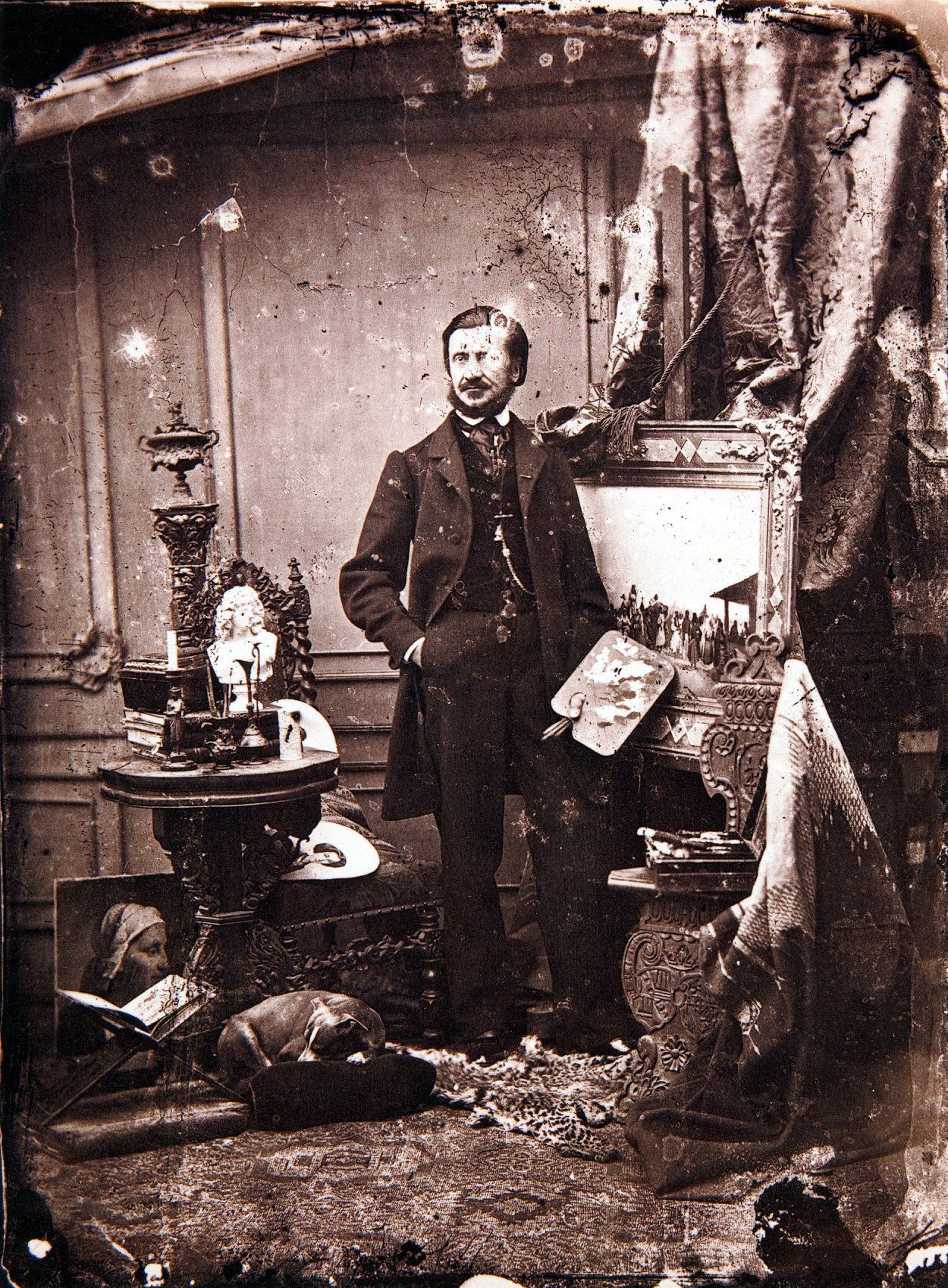
"He also met privately in 1855 with Emperor Napoleon III, with an article in Lumière, the French Photographic Society publication describing the meeting:
"M. de Szathmari, the skilled photographer from Bucharest, whose arrival we already announced, had the honour to be received by the Emperor on Wednesday evening. His Majesty wanted to see all the pictures bound in his magnificent album; he was quite interested by the Russian and Turkish generals’ portraits.
"As an eye-witness of so many events connected with the Oriental War, and being on close terms with most of those who distinguished themselves in that great fight, Mr. de Szathmari was able to give interesting details to His Majesty. While accepting his homage, the Emperor congratulated the author of this interesting collection." (Wikipedia)
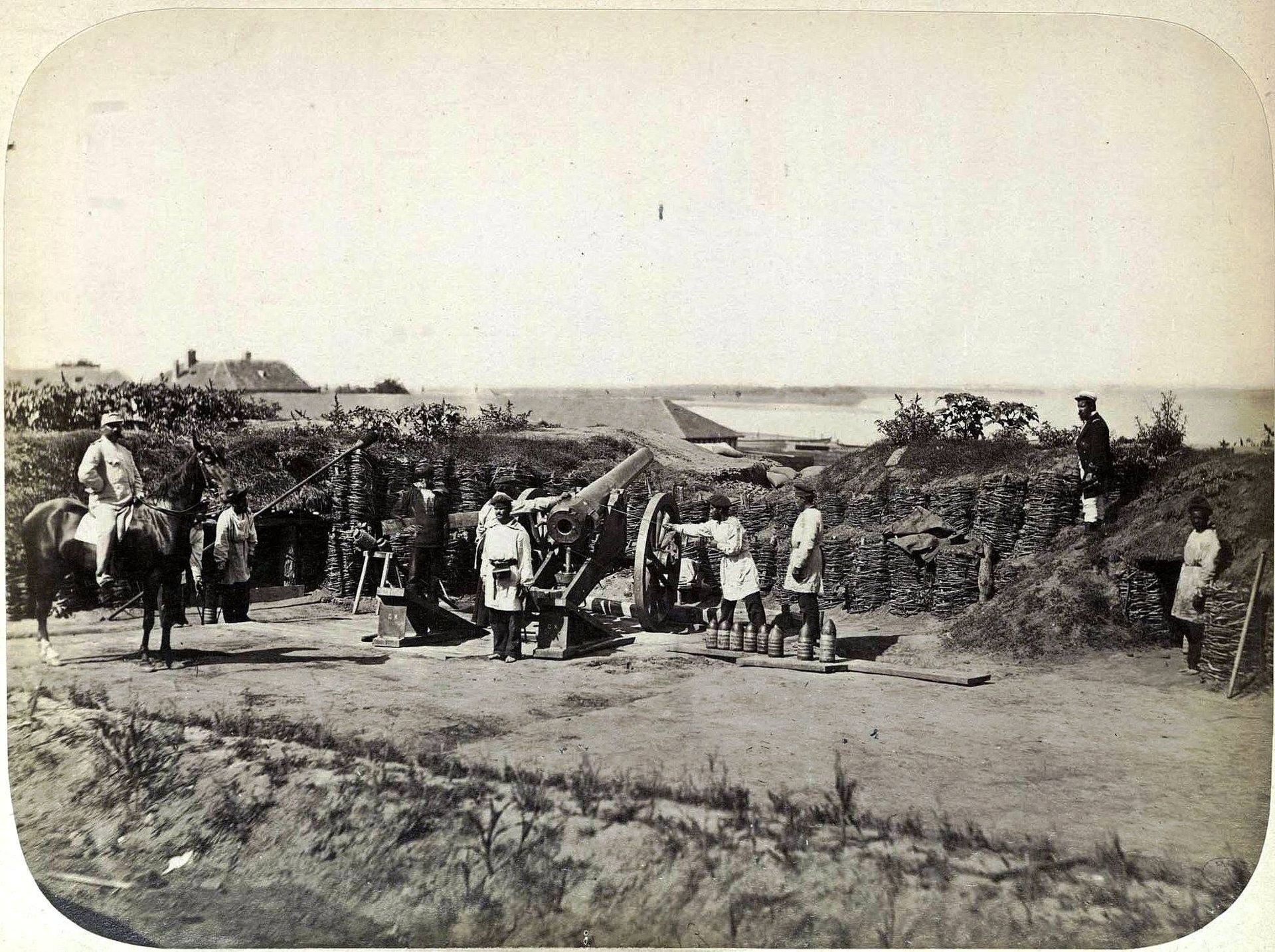
"The Crimean War was fought between the Russian Empire and an alliance of the Ottoman Empire, the Second French Empire, the United Kingdom of Great Britain and Ireland, and the Kingdom of Sardinia-Piedmont from October 1853 to February 1856.
"Geopolitical causes of the war included the "Eastern question" (the decline of the Ottoman Empire, the "sick man of Europe"), expansion of Imperial Russia in the preceding Russo-Turkish wars, and the British and French preference to preserve the Ottoman Empire to maintain the balance of power in the Concert of Europe.
"The Crimean War was one of the first conflicts in which military forces used modern technologies such as explosive naval shells, railways and telegraphs. It was also one of the first to be documented extensively in written reports and in photographs. The war quickly symbolized logistical, medical and tactical failures and mismanagement. The reaction in Britain led to a demand for the professionalization of medicine, most famously achieved by Florence Nightingale, who gained worldwide attention for pioneering modern nursing while she treated the wounded." (Wikipedia)
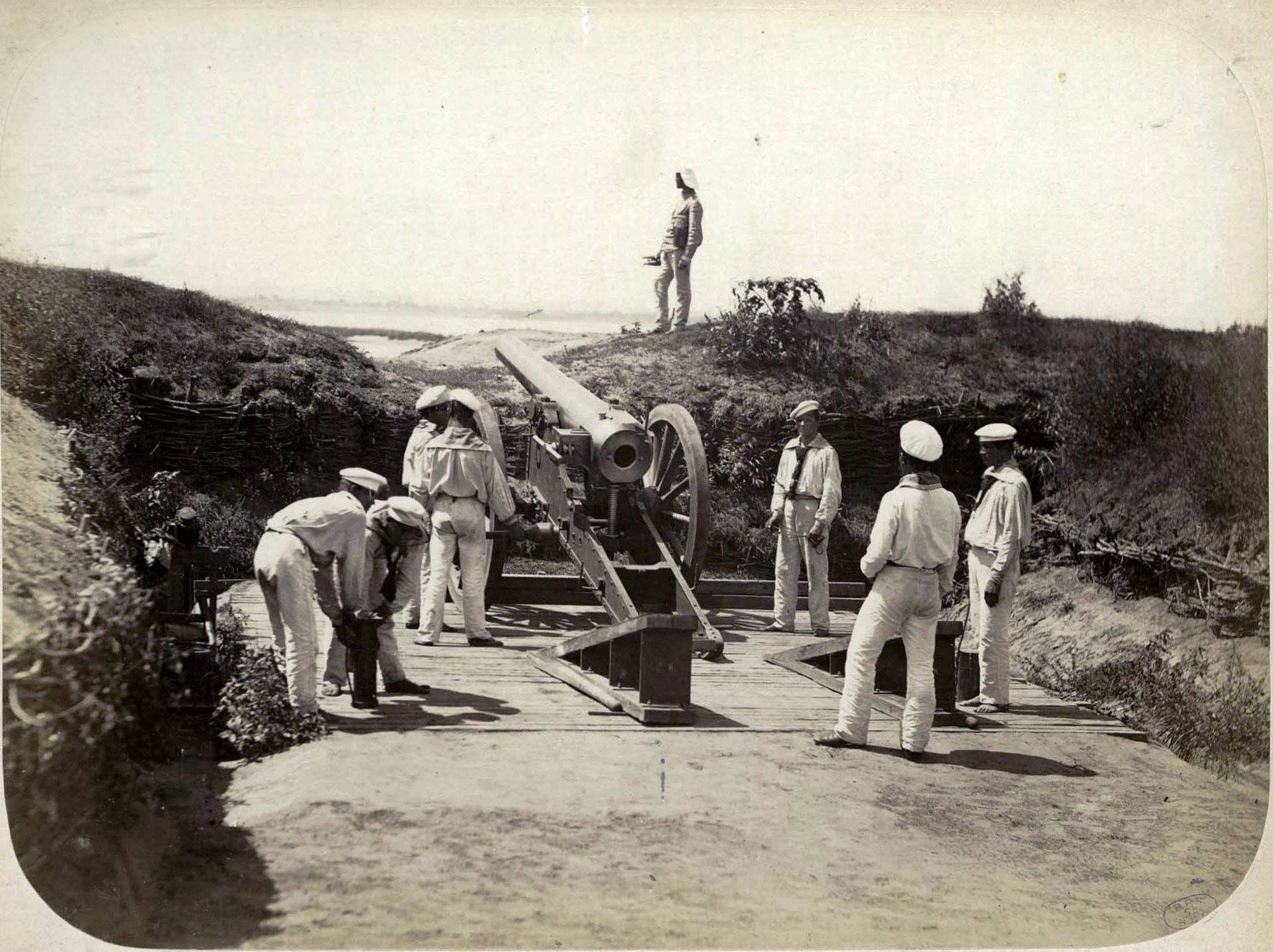
"Until the identity of the American daguerreotypist of the American-Mexican War of 1846-1847 is known, Carol Szathmari (1812-1887) must be considered the
world's first combat photographer,"the
Romanian National History Museum says.
"In the first year of the Russian-Turkish War, later known as the Crimea War (1853-1856), Szathmari decided to take his camera to the battlefield. Using a wagon specially equipped with a dark room for processing the glass plates with wet collodion, he went to Danube's banks and various other places to document the war. In April 1854 his van became a target for the Turkish artillery from Oltenitza, who thought it belonged to a Russian spy. It was fortunate for the artist that the gunners were not accurate enough to hit him.
"Besides landscapes, fortifications and battlefields, he photographed various troops, both Turkish and Russian, and their commanding officers. He exhibited his photos, bound in an album, at the Paris World Exposition of 1855. Because Szathmari's were the first images of the war. prior to Roger Fenton's large collection of photographs taken almost a year later, his album was much praised and he was presented with many awards. He eventually offered his work to Queen Victoria, to Emperors Napoleon III and Franz Josef I and to other royalty of Europe."
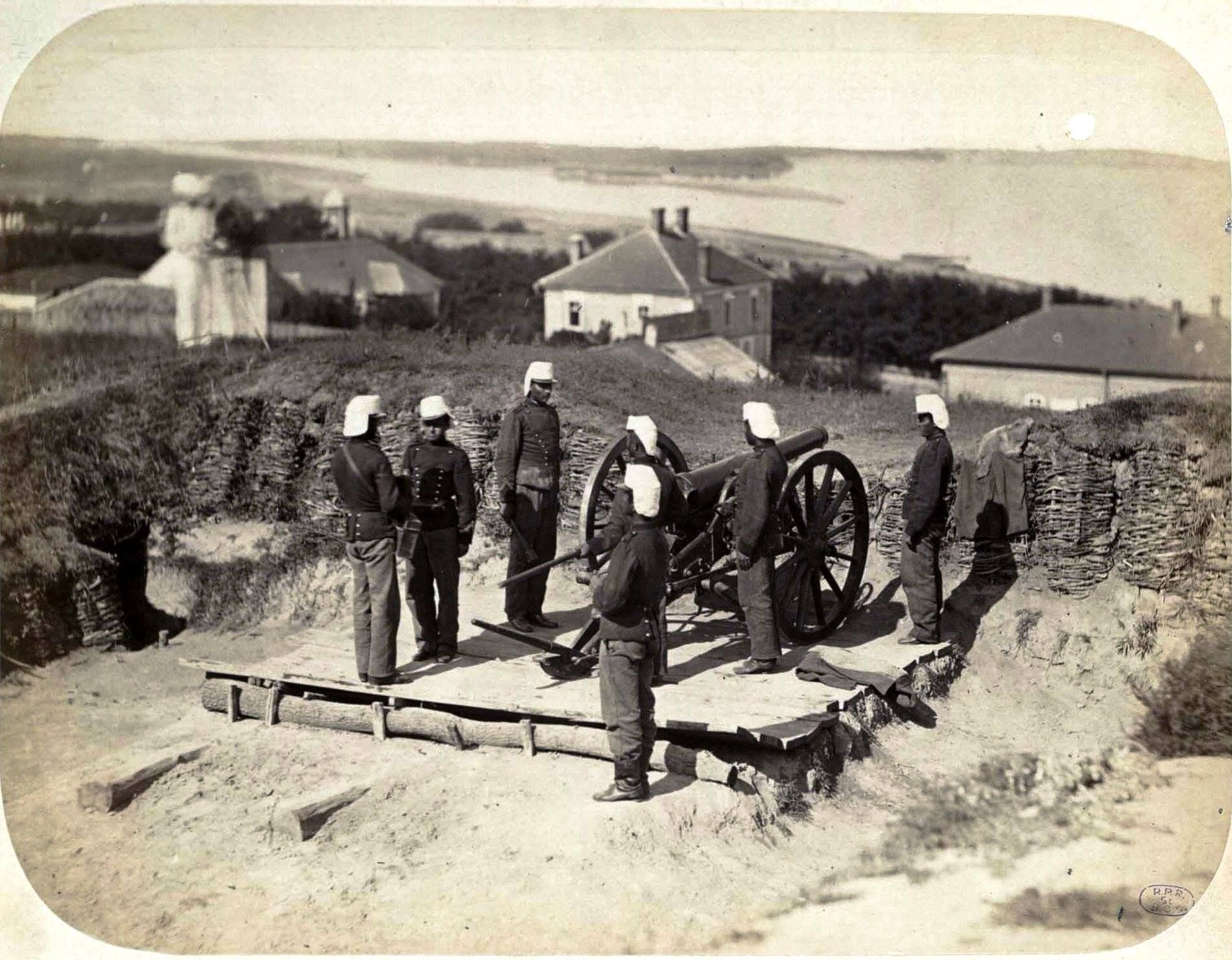
"The album's contents is his known only from descriptions of the French reviewer, Ernest Lacan, in his brochure Esquisses photographiques a propos de l'Exposition Universelle et de la Guerre d'Orient (Paris 1856)," the Romanian National History Museum says.
"Unfortunately, none of the albums survived: the one offered to the French Emperor burned in the Tuilleries Palace during the Commune of 1871; Queen Victoria's copy also burned in 1912 during a fire which ravaged Windsor Castle; Those in Austria and Germany disappeares during W.W.I and II. The copies which might have been stored in the artist's studio vanished in 1944 when Bucharest was bombed and Szathmari's house, with all its treasured collection, was distroyed.
"All the Library of the Romanian Academy in Bucharest there are a few photos which might have belonged to the album. they are as follows: a detail of Turkish cavalry, a Turkish camp of Sibley tents, a guard house on the borderof the Danube, and an elderly bashibouzouk along with his gypsy girlfriend, comfortably seated on a tattered carpet.
"The latter one was published in the French magazine "Le Monde Illustre" of October 24, 1857. Three portraits of Russian generals and three others of high ranking Austrian officers may be added to the list. None of them is bound on cardboard or has any caption. The collection of Szathmari's glass plates which is stored at the same library might offer a surprise in that they were never copied since the 1930's when they wereacquired from the artist's descendents."
"Recently I had the opportunity to discover abroad some photos which certainly belong to the lost album. At the International Museum of Photography at George Eastman House, in Rochester, New York, there are three pictures by Szathmari from that period," the Romanian National History Museum says.
"They are: "The Russian lancer's encampment in Craiova", "The Bombardment of Silistra" and the portrait of Lieutenant General Soimonoff, commander of the 104th Russian Division, killed in the battle of Inkermann. All of them are bound on carboard, surrounded by a lithographed ornament and the French captions are written in black ink by the author's hand. Their dimension is 15,3x21,1 cm. and 25,2x18,3 cm. respectively.
"Another eleven pictures by Szathmari were brought to my attention while co-operating with a British TV team producing a documentary movie about the Crimean War. With respect to this I am grateful to Ms. Teresa Cherfas from the Barraclough Carey Productions Ltd. in London who provided me photocopies of the mentioned images from the Royal Archives at Windsor."
"Many sources only say that, in April 1854, Carol Popp de Szathmáry began his work as a photographer in the Crimean War, without mentioning that these were taken on the Danube River, in Oltenița and Silistra. He almost died during the fighting. His van, which housed the baths, the camera obscura, and the photographic lens, was targeted by Turkish artillery from the other bank. The imprecision of the gunners was helpful for the Romanian photographer, who escaped unharmed. He may have been targeted because he was suspected of being a Russian spy, the camera being a great unknown for many of the soldiers involved in the battles," the
Romanian Military News Agency reports.
"The explanation of this context is also important. The Crimean War, fought between 1853 and 1856, between the Russian Empire, on the one hand, and the Ottoman Empire, allied with the Western powers (England and France), began with the occupation of the Romanian Principalities by the Russians. The front line was established around the Danube, and Carol Popp de Szathmáry had the opportunity to move easily, and the whole world had fresh information from the events.
"That is why the Crimean War remained in history as the first armed conflict that was widely covered in the press of the time. As a result of the photographs taken between 1853 and 1856, Carol Popp de Szathmáry is mentioned as the first Romanian documentary photographer and the first war photographer in the world. After Carol Popp de Szathmáry, the Englishman Robert Fenton and the American S. Robertson took war photographs, and the first war photographs come from 1847, from the conflict between the USA and Mexico, the author being anonymous."
Photos: World's First Combat Photographer, world record set by Carol Popp de Szathmári
(1) Carol Popp de Szathmari: The Album of War 1877-78/Facebook
(2) Mortar battery at Calafat./ Carol Popp de Szathmári / Wikipedia
(3) Royal Collection Trust / Photograph of five Turkish infantry soldiers. A soldier is seated at the centre with two soldiers standing to either side, the soldier to the far left standing with his back to the camera to show his rucksack. All are wearing military uniform and carrying rifles. There is a wooden door behind them and a metal railing to the right. There is an ornate border on the mount surrounding the photograph. Szathmari was one of the first war photographers, and the first to photograph the Crimean War. In the spring of 1854 he travelled to the area around the Danube and photographed the Turkish and Russian soldiers engaged in the first skirmishes of the war. He exhibited the resulting photographs at the Paris World Exposition of 1855 and presented copies to Queen Victoria and Emperor Napoleon III.
(4) Carol I with his suite, watercolor, chromolithograph from the Album of Symbolic Chariots./arol Popp de Szathmári / Wikipedia
(5) Facebook/Carol Popp de Szathmari
(6-7) Carol Popp de Szathmari: The Album of War 1877-78/Facebook
